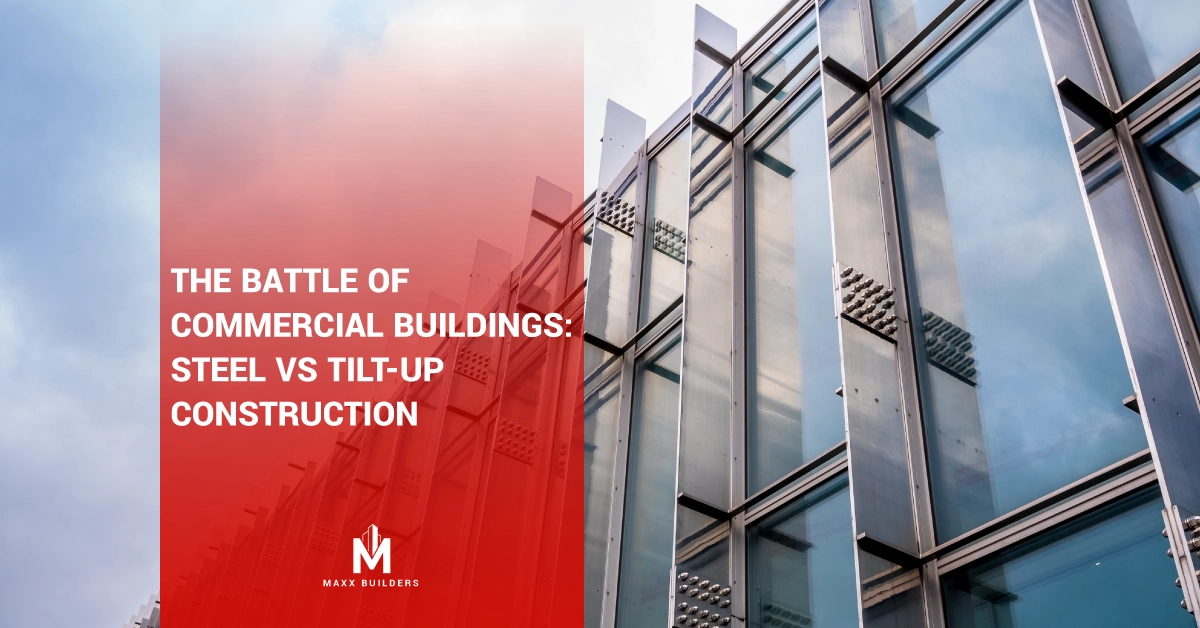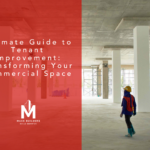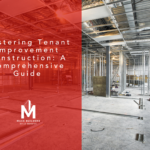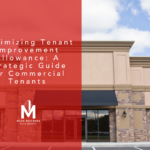In the construction industry, two popular building methods are steel buildings and tilt-up construction. Both of these methods have their own advantages and disadvantages, and the choice between them depends on several factors such as cost, durability, speed of construction, and aesthetics. In this blog post, we will explore the advantages and disadvantages of steel buildings and tilt-up construction, and compare them side by side in a table.
Advantages of Steel Buildings:
- Durability: Steel buildings are highly durable and can withstand extreme weather conditions like hurricanes, earthquakes, and heavy snow. They are also resistant to fire, termites, and other pests, making them a great option for areas with a high risk of natural disasters.
- Customizable: Steel buildings can be customized to fit any shape or size, and they can also be easily modified or expanded in the future.
- Low Maintenance: Steel buildings require minimal maintenance, as they are resistant to rust, corrosion, and decay. They also do not require painting or sealing, which makes them a low-maintenance option.
- Speed of Construction: Steel buildings can be erected quickly, which means less time spent on the construction site and lower labor costs.
- Cost-effective: Steel buildings are often less expensive than other construction methods, as the materials are readily available and can be manufactured off-site, reducing labor costs.
Disadvantages of Steel Buildings:
- Condensation: Steel buildings are prone to condensation, which can cause damage to the insulation and interior finishes.
- Limited Aesthetics: Steel buildings have a limited range of aesthetic options, as they are typically limited to a metallic appearance. They also may not be suitable for some architectural styles or historic areas.
- Sound Transmission: Steel buildings are not as soundproof as other building materials, which can be a concern in some areas.
Advantages of Tilt-up Construction:
- Aesthetics: Tilt-up construction allows for a wide range of aesthetic options, including various colors and textures, which can help a building fit in with the surrounding environment.
- Low Maintenance: Tilt-up buildings are low-maintenance, as they require minimal upkeep and do not need to be repainted.
- Energy Efficiency: Tilt-up buildings are energy-efficient, as they provide excellent insulation, which can help reduce energy costs.
- Fire Resistance: Tilt-up buildings are highly fire-resistant, which can help protect against the spread of fires.
- Longevity: Tilt-up buildings are highly durable and can last for decades with minimal maintenance.
Disadvantages of Tilt-up Construction:
- Weather Dependency: Tilt-up construction is weather-dependent, and construction can be delayed or interrupted by inclement weather.
- Labor Intensive: Tilt-up construction requires a lot of labor, which can be expensive.
- Limited Customization: Tilt-up buildings are limited in terms of customization, as the building panels are pre-cast and cannot be easily modified on-site.
Here is a table summarizing the advantages and disadvantages of steel buildings and tilt-up construction:
Cost Comparison
When comparing the pricing per square foot of tilt-up construction versus steel buildings, it’s important to consider the advantages and disadvantages of each option.
Tilt-up construction offers several advantages, such as its durability and energy efficiency. However, the cost of tilt-up construction can be higher than steel buildings due to the labor-intensive process of casting the panels on-site. Tilt-up construction also requires more time to complete than steel buildings, which can add to the overall cost.
On the other hand, steel buildings offer several advantages such as their customizable design, low maintenance, and quick construction time. Steel buildings are also often less expensive than tilt-up construction due to their pre-engineered and off-site manufacturing process. However, the cost of steel buildings can increase depending on the complexity of the design and the type of steel used.
Ultimately, the decision between tilt-up construction and steel buildings comes down to the specific needs and budget of the project. Tilt-up construction may be the better option for projects that require a highly durable and energy-efficient building but are willing to pay a higher cost for the construction process. Steel buildings may be the better option for projects that require a quicker construction time and lower cost, but have less flexibility in design.
It’s important to note that pricing per square foot is just one aspect of the overall cost of a building project. Additional costs to consider include site preparation, permits, foundation work, and utility installation. It’s also important to work with an experienced and reputable contractor who can provide an accurate estimate of the overall cost of the project.
In conclusion, when it comes to pricing per square foot, tilt-up construction and steel buildings both offer advantages and disadvantages. The decision between the two options ultimately depends on the specific needs and budget of the project.
Steel buildings are a cost-effective and durable option for commercial construction, but there are other materials that can be used to construct a warehouse. To accurately determine the cost of your future warehouse construction, it is important to first determine which materials you would like to use.
There are benefits to different materials used in warehouse construction. For example, insulated concrete offers excellent insulation and can last for a long time.
There are several material options to choose from, each with its own cost per square foot. Stud frames typically cost between $20-$40 per square foot, tilt-up construction methods cost around $25-$40 per square foot, and steel frames cost around $10-$20 per square foot.




